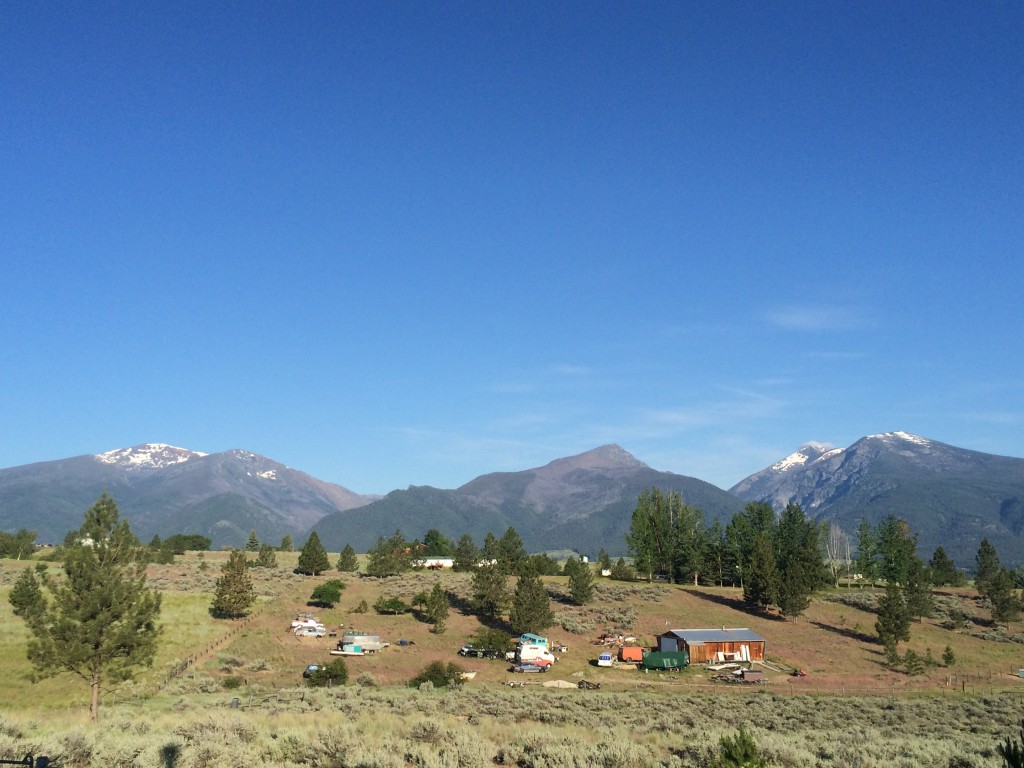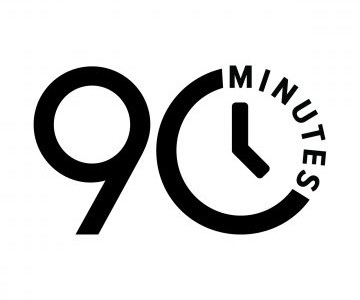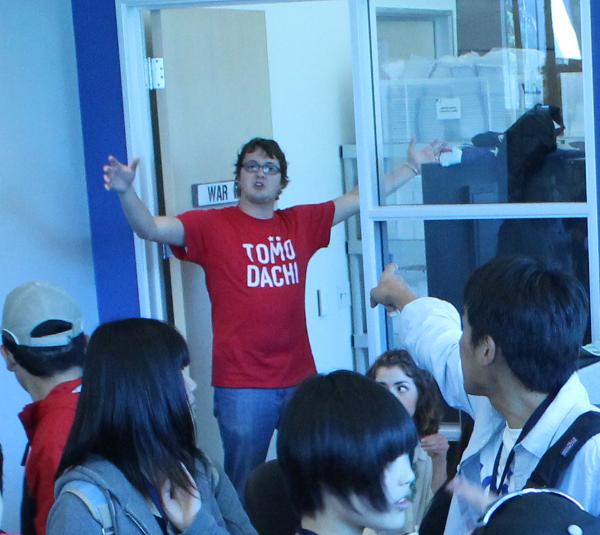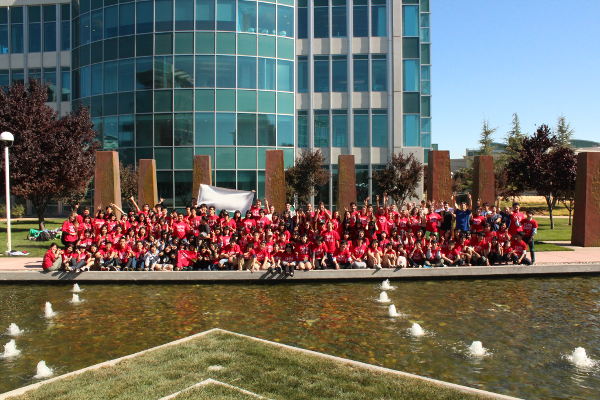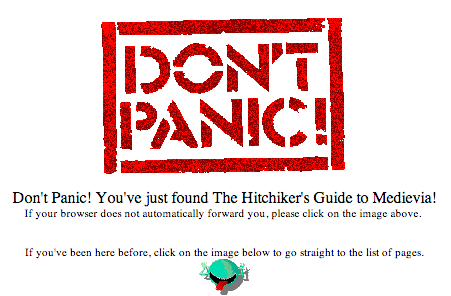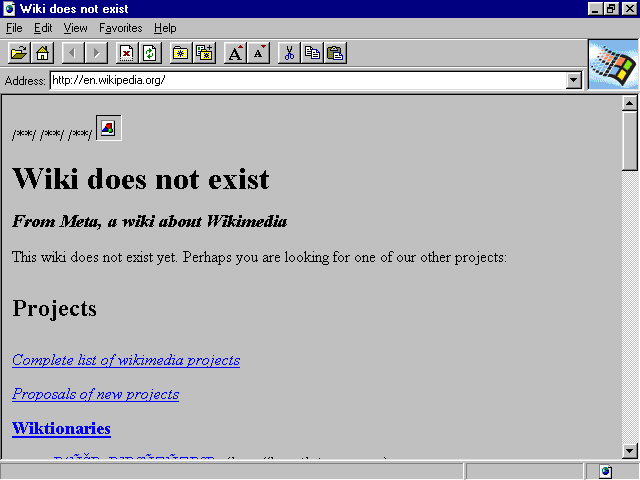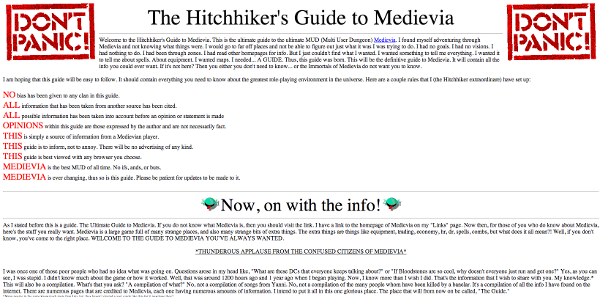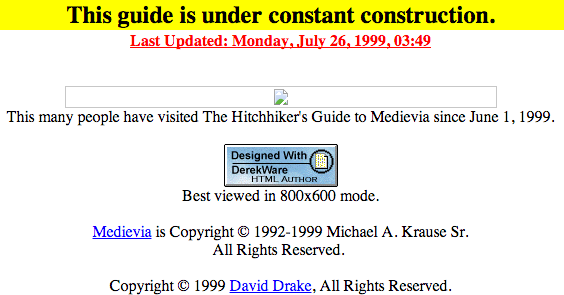Stumbled across a website I created 15 years ago, still online. Clicking through the pages brought me back to a very different and beautiful time of the Internet. 1999 was a time where you connected to the Internet to gain access to other things. These days, the Internet is always available, always on, and always connected.
Read on to learn about a time before “The Internet” was synonymous with Facebook, search engines, web pages, chatting, photos, and the phone in your pocket. A time when you had to connect to the Internet.
Technology of 1999
To give you an idea of how people were connecting to the Internet in 1999, here are the numbers for you from a 2000 FCC report, quoted here:
Dial-up, for those of you not familiar, was a connection through a modem over regular phone lines, popular in 3 speeds at that time. 28.8, 33.6 and 56k. Those are in kbps, so for download speeds you’re talking maximums of: 3.6 KB/s, 4.2KB/s, and 7 KB/s respectively. These speeds were rarely, if ever, achieved. Putting that into into perspective: we used to plan on downloading a single song, that’s 1 MP3, over the course of many hours, if not days. Downloading an entire album, as file-sharing was gaining popularity during these times, meant multiple days worth of connecting, re-downloading, and retrying.
The population of the United States was 272,690,813 in 1999. Having roughly 62,186,000 Internet users in 1999, that means only 22.8% of the United States was using the Internet at the time. Compare that to the latest census report stating that 71% of homes have Internet usage.
Most people still connected to the Internet on a dial-up modem and the connection offerings were becoming dominated by free access providers. We were growing from an AOL-dominated marketplace. NetZero had been released the year before, offering the first nationwide free Internet access. They gained 1,000,000 subscribers in just 6 months. 1999 brought competition like Juno Web and others. Free Internet was available as long as you didn’t mind highly targeted advertising throughout the experience. There were plenty of hacks available to get around the advertisements, but the majority of users dealt with them.
“Don’t pick up the phone!”Lost cry of the earlier generation of Internet users.
Deciding on a 56k Standard
The two big sides of the 56k fight had finally come to an agreement and the v.90 standard was born. Previously, you had to pick an Internet Service provider that was compatible with the technology of your modem if you wanted 56k speeds. No more deciding whether you wanted to connect to the Internet as Rockwell / Lucent saw fit with K56flex, or with USRobotics’ X2 technology. Cable Internet was on the rise. RoadRunner was dominating broadband cable access and would be swept up by AT&T the next year in their acquisition of MediaOne. Broadcom, one of the main chipset makers enabling the high speed revolution saw $518,000,000 in revenue for 1999; 12 times what they saw just two years prior.
Instant Messaging
Instant messaging had become an accepted and widespread technology. 1998 saw America Online acquire ICQ‘s user base of 35,000,000 registered users. Microsoft released their own version of instant messaging, MSN Messenger Service, in 1999, attempting to push against America Online’s proprietary technology by touting the IETF standards. This was a massive and odd shift to see from Microsoft who had just a few years prior been in hot water with their Netscape VS Internet Explorer browser wars. During this time, Microsoft refused to let another internet browser interact well with their operating system. Eventually, Microsoft would open an API to allow access to the Netscape folks and Netscape was then picked up by AOL.
Needless to say, drama in and amongst technology companies is not anything new.
Gaming in 1999
Gamers on the Internet were classified by the technology and speed they had available to them. You were either a high ping bastard (HPB) or a low ping bastard (LPB). Most folks were still on dial-up connections. They were happy with ping times having latencies in the 2-300 range. Heck, 400 was okay as long it was a stable 400. Meanwhile, the exceedingly lucky users sitting on connections that were incredibly fast for the time getting ping times of 100 or less. These types of connections could only be found in places like: Internet cafes, in colleges on unregulated Internet pipes, or employees in places like ISPs or technological or scientific organizations. There, you would undoubtedly find fellow nerds laughingly scoring a head shot with ease, leaving the HPBs wondering what happened.
The end of 1998 brought about the revolutionary Half-Life video game. Counter-Strike was entering Beta 5 at the end of the year, paving the way for the oft-remembered beta 5.3. Unreal Tournament and Quake III Arena were at the forefront of modern video game technology. Ultima Online had introduced massively multiplayer online RPGs to the world outside of the glorious text-based MUDs in ’97. This allowed EverQuest to be released in March of 1999, combining an FPS-like experience with the massive multiplayer online experience in a way that had never been seen before. QuakeSpy had picked up a couple more titles and was morphed into GameSpy.
Technology was exciting for gamers at the time as well. The Pentium 2 and AMD K6-2 were still trucking along as great processors. For the first time, OpenGL saw a competitor in Microsoft’s DirectX offering. Direct3D 7 offered hardware acceleration for transform and lighting as well as allowing vertex buffers to be stored in the hardware memory. The first card to take advantage of this was the GeForce 256, an incredible card for the time. Some other cards from the time that will surely bring back memories:
- Riva TNT22
- 3dfx Voodoo3
- Matrox G400
- ATI Rage 128
- S3 Savage 4
Who doesn’t remember digging through massive Computer Shopper magazines looking at those things?
The Landscape of the Internet
Connecting to the Internet in 1999 opened up a world of different services and technologies. Whether you wanted to browse the World Wide Web, chat with friends over IRC, instant message someone over AIM / MSN / ICQ, download files from Usenet and IRC or that new Napster thing, connect to aggregation servers to find a game to play, or enter an online text-based world in a MUD, “the Internet” was not what most people consider it today.
Because of the relatively low average speed of Internet access, it would be unthinkable to have a web page coming in at a full megabyte or two worth of content. It would simply take far too long to load. I was able to find some mentions on the Internet that the average size of a site was around 60,000 bytes in 1999. That is 4% of the average page size of the top 1,000 sites today.
Browser Wars
Internet Explorer was the obvious king during 1999 but it wasn’t always like this.
Prior to Windows 95 and the Internet Explorer 1.0 offering they gave in their add-ons pack, Netscape had completely dominated the browser market on Macintosh and Windows platforms. Connecting to the Internet and browsing the web had become synonymous with the Netscape name and their nautical imagery of lighthouses and ship’s wheels. To get all the professional features, you had to pay money for your browser; a ludicrous idea today. When Microsoft started bundling a browser with their operating system for free, things started to heat up. Netscape realized that they had to be bigger and better since they couldn’t compete with the free price. Attempting to beat out Microsoft led Netscape down the road of developing some terribly buggy and horrendous browsing experiences with some versions of Netscape lasting on the market less than 6 months.
Thanks to the bumbling and fumbling of the Netscape brand and technology, the Mozilla Organization was formed in 1998 and the Netscape Communicator 4 source code was made open source which was a massive shift for the time. 1999 was a time when open source wasn’t as well known, particularly at the consumer level.
By February of 1999, Internet Explorer had taken over the web, accounting for 64.6% of traffic. Over the course of the next few years, their market domination would grow until Internet Explorer owned the browser space in 2004 with 95-96% of all web browsing. And we were all suffering through Internet Explorer 6. And it wasn’t good. I still find it amazing how much has changed in the browser space over the course of 15 years.
Content and the Rise of Web Hosting
Just a few years before 1999, the Internet was delivered in the flavor of the choosing of your provider. AOL had a version of the Internet with their own chat rooms, storefronts, websites, and content. CompuServe and others had theirs. Simply viewing HTML-based pages in a browser over the Internet on the World Wide Web was eventually made available to AOL users. But, as anyone who tried to pull up a website during those times could tell you: it was slow, clunky, and not where AOL et al. was trying to get their users to go. This walled-garden approach to the Internet was extremely popular before privately owned Internet Service Providers started popping up, offering simply a connection to the Internet. What you did once you were connected was up to you. This was a very different idea than the CompuServe and AOL days.
Before the popularity of shared hosting or even mentions of anything resembling “the cloud,” users of the Internet could find a spot for themselves on the World Wide Web at a number of free website hosts. Exchanging banner advertising for hosting megabytes, companies like Tripod, GeoCities and Angelfire started popping up. These companies increasingly offered more and more megabytes of content available for hosting as time went on. Eventually, they started offering additional features like email, or dynamic HTML elements and applets that would offer things like a “hit counter.”
Being 16 on the Internet in 1999
Before you turn 16 today, you’ve probably already created a massive online presence. Even younger kids have hundreds if not thousands of pieces of content on the Internet; whether it be photos, chats, messages, or anything else. Being in high school, you probably have a presence on multiple social networks. You’ve probably tried to start a a blog or two. More than likely, you’ve got a couple of AKAs on some forums or websites, multiple instant messaging nicknames and email addresses; a different persona, or 10.
Having a presence on the Internet, whether it be in chat rooms, on the World Wide Web, or in a video game, was definitely not the norm in 1999. Tools were just starting to come available to make this more and more popular, but mention HTML or a building a website to your peers in high school and you’d likely be finding yourself amongst the “geeks and nerds” social group. Keep in mind: being a geek or a nerd was in no way trendy or cool in 1999. Being a nerd then was a far cry from the kids today wearing fake glasses and proudly claiming their geek cred, or whatever the hell they call it.
Creating your own presence or website on the Internet was something you had to want to do on your own because there weren’t a lot of resources to help you along.
Web Technologies in 1999
1999 saw the invention of the XMLHTTP ActiveX control in Internet Explorer 5. This new technology allowed for elements of a web page to update dynamically like stock quotes or news stories. This would eventually become the XMLHttpRequest that would power AJAX and the Web 2.0 movement a few years later in 2004. However, 1999 was the first mention of Web 2.0 when Darcy DiNucci laid out what would become the future of the World Wide Web in “Fragmented Future“:
“The first glimmerings of Web 2.0 are beginning to appear…Ironically, the defining trait of Web 2.0 will be that it won’t have any visible characteristics at all. The Web will be identified only by its underlying DNA structure — TCP/IP, HTTP, and URLs. As those technologies define its workings, the Web’s outward form—the hardware and software that we use to view it—will multiple. On the front end, the Web will fragment into countless permutations with different looks, behaviors, uses, and hardware hosts.”
While Darcy certainly had a handle on how services would grow and evolve, she went on to say something that is particularly striking and true of today:
“The web will be understood not as screenfuls of text and graphics but as a transport mechanism, the ether through which interactivity happens.”
Before Web 2.0
But, we weren’t there quite yet. Dynamic content on the web, so far, meant you needed to know some obscure technologies for some CGI handling (like PHP), or you knew Java and wrote massive and heavy applets that users would download. Learning these technologies generally meant going to a book store, paying a decent chunk of change for a book and set of disks (or CD), and sitting down on your own; just you, the author, and the computer as your resource. You couldn’t Google for the answer or head to Github to download a package to do what you wanted to do.
Because of the high barrier to entry for most dynamic programming tasks on the web, services like Bravenet offered different dynamic content that you could sign up for and include on your website. Some entire businesses and websites were built on the backs of such services like Bravenet forums.
Because the idea of a page ranking wasn’t really available, a counter was placed on most websites to list the number of visitors. This was a defining metric of the day, letting you know the difference between some site that someone just put on the web yesterday, and a bastion of information that had become popular and withstood the test of time, sporting thousands if not hundreds of thousands, or even millions of views. Even owners of websites relied on these counters to know, from day to day, whether people were visiting their websites. Google analytics or popular traffic stats packages simply weren’t readily available.
The Hitchhiker’s Guide to Medievia
Amongst this landscape of the Internet in 1999 is where I brought to life one of my earlier examples of dabbling with technology and programming. Hosted on Tripod, I created The Hitchhiker’s Guide to Medievia. This guide was meant to be a compendium of information for a popular MUD at the time called Medievia. Smattered throughout the pages are my hopes and dreams of content that will eventually appear on the guide, relics of the age of the web before Web 2.0 and many other hilarious things.
Why Did I Create the Page
I’ll let my 16 year old self explain the necessity of the page of the time from the Why page:
“It would contain maps of all the zones, lists of equipment, information about things that you probably don’t even care about, and it would all be created by one man…So, here it is. All of the information. It wasn’t created for me, but created for everyone. Created for all Medievians who ever had troubles finding the answer. I often found myself looking through every single web page in my bookmarks to try and find the thing I was looking for…A place that had all of the information. A place that had everything you needed. In short, a guide to Medievia. Well, welcome to that guide.”
Because there was no Google to aggregate and sort through the depths of the World Wide Web, and Wikipedia had not yet popularized the idea of a “Wiki” for different types of information, it was up to individuals or organizations to compile information on their own.
The only good way you could find a website or content was for it to be linked to somewhere you already were.
While there were tools available to search the web, they were nothing compared to the aggregation and auto-indexing that we see today. I was a huge fan of this particular game and there wasn’t a great source of information about it at the time for newbies or veterans of the game. So, I took it upon myself to do something about it.
From Minimal Design to Content Overload and Back Again
Looking back on my old static HTML code, my lack of abilities to use a database to create entries for dynamic pages, and the overall abundance of text with very little imagery, I can laugh at how we’ve come full circle in regards to web design.
When bandwidth started increasing and broadband started becoming more popular, the web became more and more chocked full of images, animated content, and eventually even more sophisticated media like videos and audio. As technologies became popular and available and the idea of using AJAX or similar technologies to move from static sites and page reloads to dynamic content got more adopted, the average website became more and more cluttered. Tons of images, videos, advertisements, animations, sounds, guestbooks, counters, and multiple technologies became the norm. A couple of years ago, people started developing plugins for browsers because the world wide web had simply become unweildy.
Today, we see designers touting that, at its core the Internet (as they call the World Wide Web these days) should go back to the time when text was the main content and an image or two was necessary. Typography has become the king again and we see minimalist blogging platforms with designs focused around the content and text becoming very popular, even trendy. Yet, as we look at a screenshot of the websites we were creating during the early days, we can see that it is at is always has been:
Spreading Open Source Before SourceForge
SourceForge, what would become the popular repository for open source projects to browse and download, had only been created in 1999. Before it was covered with ads and became a graveyard of old projects, SourceForge was an incredible resource. There weren’t any big repositories for open source software that were popular outside of academic or otherwise small circles of developers. Because of this, users who were gracious to software would often host or re-host tools to get them out there. This type of behavior can be seen on my DerekWare HTML Author page. Apparently, the original website for a piece of software had disappeared so I took it upon myself to re-host the application. From the sounds of things, my 16 year old self would have loved to have been introduced to Vim at an earlier age:
“It’s not a big fancy program with a bunch of point and click crap, it’s basically a window with some toolbars to make your life easier. Once you’ve been coding with HTML for a while you start to not really need the point and click stuff anymore and you’d much rather just type out everything. Well, this program allows for both. It’s easy to use, has some point and click stuff, and yet you can be advanced with it as well.”
Online Presence Before Social Networks
Before a social network was the place to put all of your information about yourself, “A/S/L” was the common phrase in chat rooms. Age, sex, and language, was the basic information necessary to know the minimal details about someone in order to determine whether you wanted to create an interaction. You didn’t see a photo of the person, or get to read over their personal details prior. There was no place to go and find new friends or explore people in your area. Because of this, users would often create a page on their websites that would explain information about who created the content and offer an opportunity for the website creator to put themselves out there.
Here, I can see my 16 year old self, in a tiny little town in Montana, attempting to reach out to someone, anyone else, who actually had a computer connected to the Internet. There were only a handful of people in my tiny high school who even owned a computer, much less one with a modem, and even more rare: one connected to the Internet. On my Creator page, I list out what I feel is pertinent identifying information for the time. Age, height, weight, eye color. I even lament that doing so seems lame, but there really wasn’t any other avenue available at the time:
“So there you have it. That’s me in a nut shell. Well, actually, that’s more like my driver’s license info, but, it gets the point accross(sic).”
Shopping Links that Work 15 Years Later
The name of the website was taken from a popular book called Hitchhiker’s Guide to the Galaxy. Because of this, I created a page dedicated to the inspiration. There, I provided 4 links to purchase the book. One from Amazon, one from Barnes & Noble, one for Borders and one for Buy.com. Surprisingly, two of those links have withstood the test of time, still linking to the correct content! Those links are:
The Internet, Today
What we consider “the Internet” today, the collection of technologies like email alongside the presence of the World Wide Web, has always been about trying to make a connection or create. As we find ourselves in an infinitely more connected world than we were 15 years ago, it’s easy to look around and find all sorts of ways that this philosophy or idea has come to fruition.
Imagine what the world would be like if everyone who wanted to create their place on the web, or connect to someone on the Internet, needed to learn a bit of HTML or borrow a bit of programming to do so. Today, the only requirement for being on the Internet is being born in a place that’s connected. Heck, your parents will probably put you on the Internet before you are even out of the womb.
For now, I’ll leave you with the footer of my old webpage. The contents of which are so indicative of the signs of the time:
Oh the times, how they have changed.
Liked this post? You should follow me on Twitter @randomdrake or subscribe to my feed.
